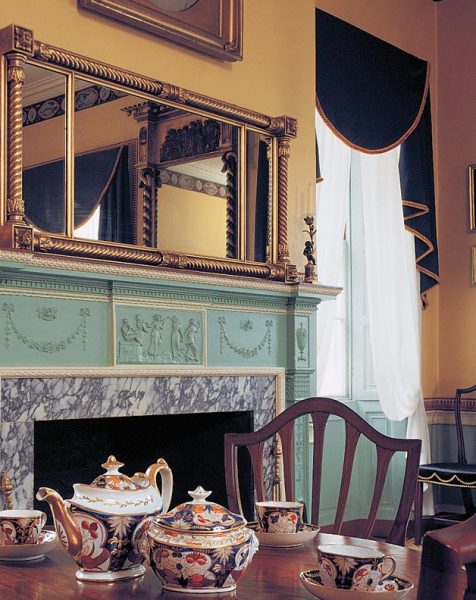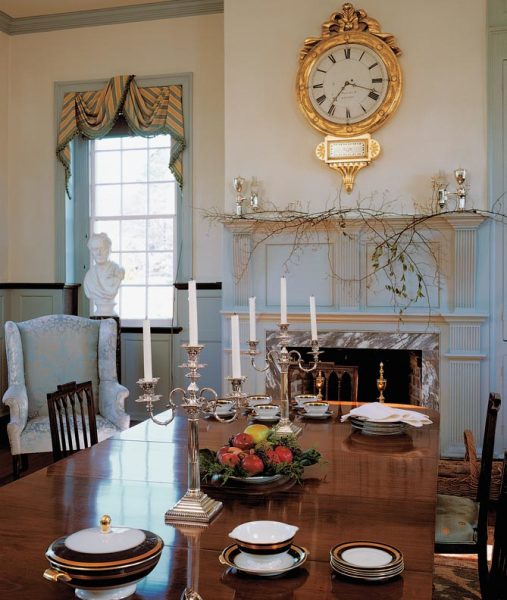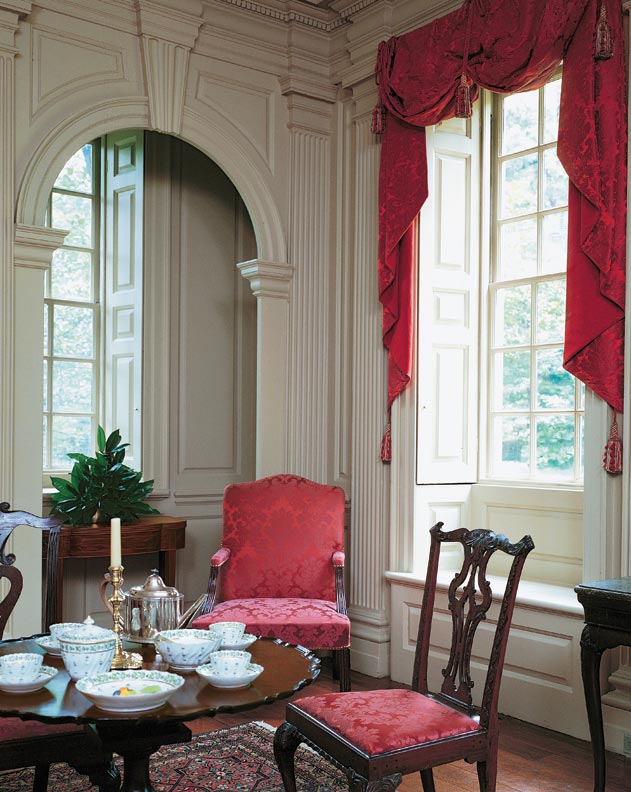
Boston’s Harrison Gray Otis House, built in 1796, has such Federal elements as this Adamesque mantel with garlands and urns. (Photo: Paul Rocheleau)
Even architectural historians can’t seem to agree on what’s a late Georgian, what’s Federal, what’s Adam. All of these classically inspired trends—whether based on Italian Renaissance buildings or the original Greek and Roman structures themselves—were filtered through England before they came to America. Now add the different building traditions of North and South, urban and vernacular…it’s a web of influences, not a straight lineage.
Georgian houses, along with dwellings of the earliest European settlers, deserve to be called “colonial,” as most of them pre-date independence. The style was named for the four English Kings George, who reigned from 1714 to 1830. In America, these classical houses were built from 1700 until 1780 (and to ca. 1830 in some areas). Despite inevitable adaptations—the use of wood-frame construction and clapboards, for instance—Georgian houses were closely related to English precedents. Soft furnishings (carpet, wallpaper, fabric) in Georgian houses were as bold as the architecture, stressing strong colors and three-dimensionality.

This is Ayr Mount in North Carolina, an iconic Southern Federal home. In the east parlor, the Federal-period mahogany dining room table is original to the house. Exquisite woodwork is in a late Georgian style. Each of eight mantels has a unique design. (Photo: John Hall)
The Federal period runs from about 1780 until 1820 (and to 1840 in some areas). An issue is whether to call these houses Federal or Adam. Regional traditions and American cabinetmaking resulted in a Federal style that can be recognized whether it is vernacular or high style, in the North or South. The word Adam (or Adamesque) may be reserved for woodwork, ornament, and a color palette related to the English classicist architects Robert and James Adam, whose refined work introduced such motifs as swags and urns.
Inside, Federal interiors were different from the previous Georgian style. Wood-paneled walls and over-scaled elements gave way to openness and refinement. Decorations were finely carved in wood and cast in plaster. The circle and the ellipse are recurring motifs. Federal is dignified, restrained, and monumental. Details such as moldings and columns were smaller than in Georgian style, but the structure—windows, ceiling heights—had a bigger scale. American Federal interiors used more pastel colors compared to the bright (even acid) colors of English Adam rooms.

Stately floor-to-ceiling paneling in a Virginia house, ca. 1753, is a handsome example of bold Georgian woodwork. (Photo: Paul Rocheleau)
Another kind of classicism (1770–1840), variously called Early Neoclassical, Early Classical Revival, and Jeffersonian Classical, was based on the interpretations of Italian Renaissance architect Andrea Palladio. High-style residential landmarks such as Jefferson’s Monticello had influence in the South. The interiors of Classical Revival houses were most likely to have Adam-style Federal interiors.
The Greek Revival became America’s National Style from about 1820 until the Civil War. A deep cornice and frieze, full or broken pediment, and gabled roof are style markers, regardless of whether a house has columns. Inside, generous rooms accepted large-scale American Empire furniture.







